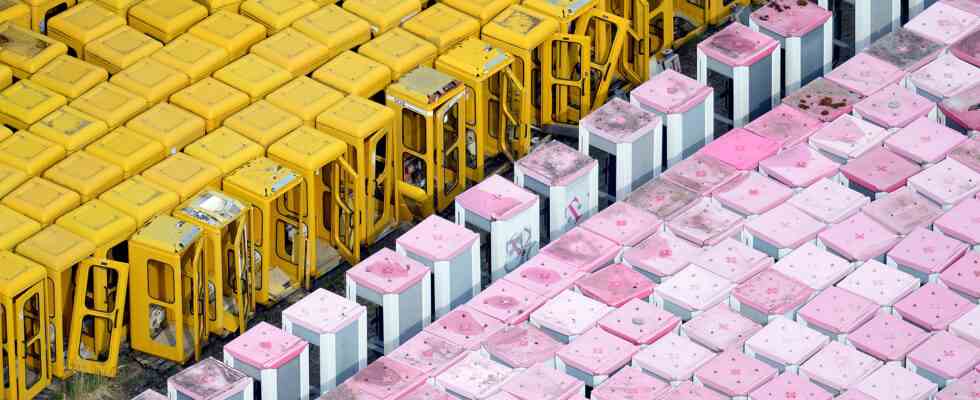Status: 11/21/2022 10:36 am
In the last public telephones it is now only possible to pay by card. Starting next year, Telekom will block all telephone pillars. Nostalgics can go to the museum, everyone else continues to use their cell phones.
From now on it is no longer possible to pay for telephone calls with coins in the approximately 12,000 remaining telephones nationwide. The coin payment will be deactivated, announced Telekom in Bonn.
From the end of January, the payment function using telephone cards will also be discontinued. This then ends the entire telecommunications service at the telephone pillars or booths.
Farewell to the phone booths
Anke Plautz, Radio Bremen, Morgenmagazin, November 21, 2022
The end of the narrow cottage
The generation of smartphones may now be asking themselves: what is a telephone house? For them it is hard to imagine what was normal in the pre-mobile era: if you were out and about, you first had to look for a phone booth to talk to loved ones or to clarify other important things.
In the cramped little houses, there was usually an unpleasant smell, often downright stinky – of musty phone book paper, of sweat, cigarette smoke, even urine. Sometimes the coins fell through the machine or it ran out far too quickly – and people were waiting impatiently in front of the door, who also wanted to make a quick phone call. All this will only be a memory from January.
“Be brief!”
This ends an era. It all started in Berlin in 1881 with the first “telephone kiosk”. Germany’s yellow telephone booths from the Bundespost (which existed from 1947 to 1994) used to stand out in the cityscape or landscape. In the mid-1990s, Telekom operated more than 160,000 public telephones. They were not only in shopping streets or at train stations, but also in purely residential areas or at the edge of the forest.
By 2025, the last telephone pillars and cells will also be dismantled. (archive image)
Image: dpa
For decades, “Keep it short!” as a request to the house – often supplemented by the note “Be considerate of those waiting”, later then, modern telephone cards were used, “Calling without coins”.
Telephone pillars are power guzzlers
In the end, the so-called basic telephones and steles were actually only found at busy train stations, airports or exhibition grounds. The columns were no longer economically viable. According to Telekom, they are also power guzzlers: “On average, it’s between 500 and 1,250 kilowatt hours a year.” Since the amendment to the Telecommunications Act at the end of 2021, there is no longer an “obligation to operate public telephones”. Even for emergency calls they are irrelevant. Mobile communications took over there too.
By the time the last telephone steles are finally dismantled, the year 2025 will have dawned, according to Telekom. In consultation with the municipalities, the company wants to continue using around 3,000 of the last 12,000 locations without a telephony function. They are to be equipped with so-called small cells, small antennas that amplify mobile phone signals.
The yellow ones are already sold out: discarded Telekom telephone boxes on a site in Brandenburg.
Image: dpa
Telekom sells the old cells
The only thing left for nostalgics is the museum. For example, the one for communication in Frankfurt am Main, where far more than 50 objects related to public telephony can be seen. Numerous converted telephone booths – be it as a bookcase, ice cream kiosk, mini recording studio or even shower stall – are still in use throughout Germany.
Discarded phone booths can be bought online on sales platforms or from Telekom itself. However, the very old yellow cells have long been sold out, says a Telekom spokeswoman.

